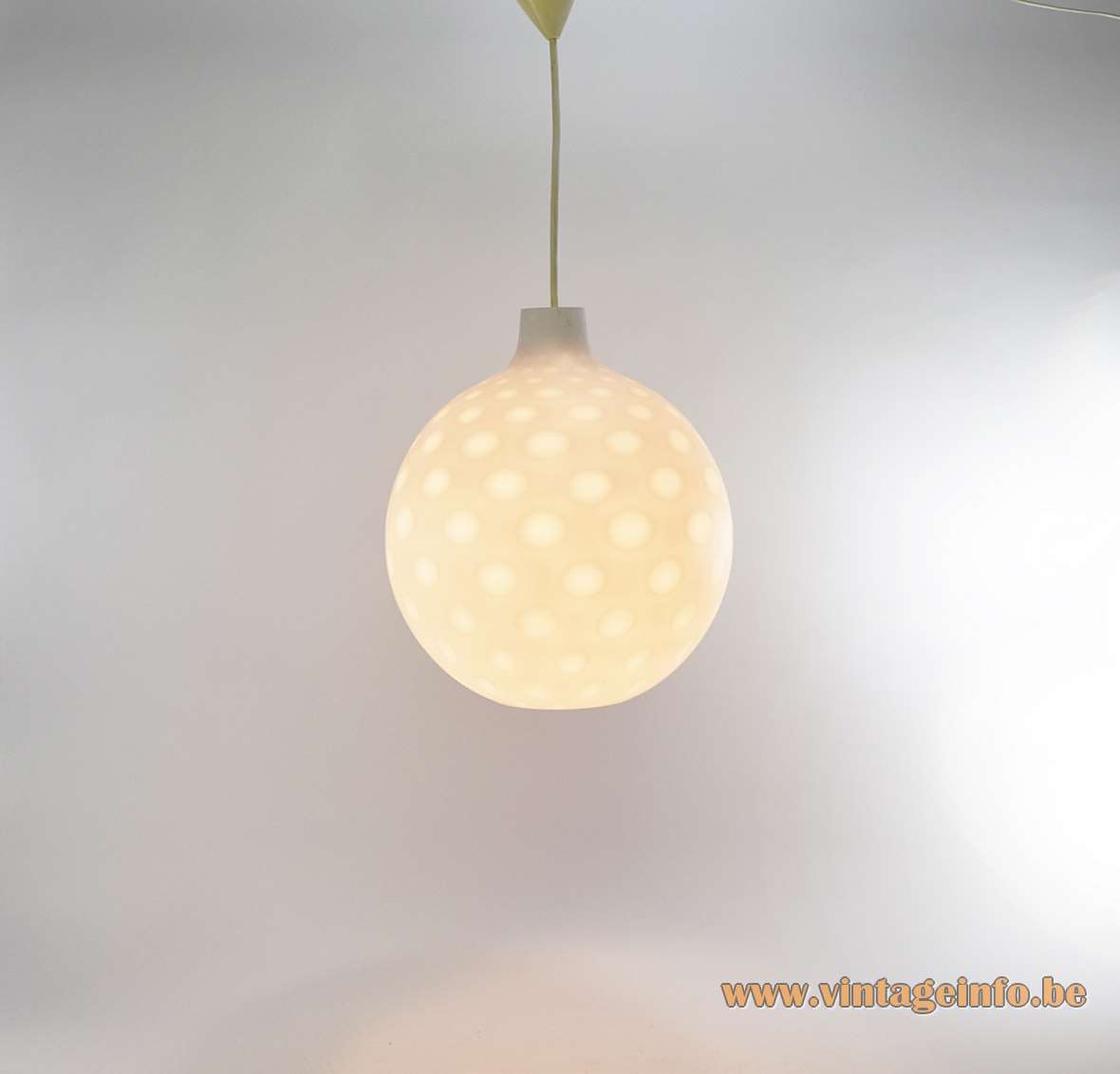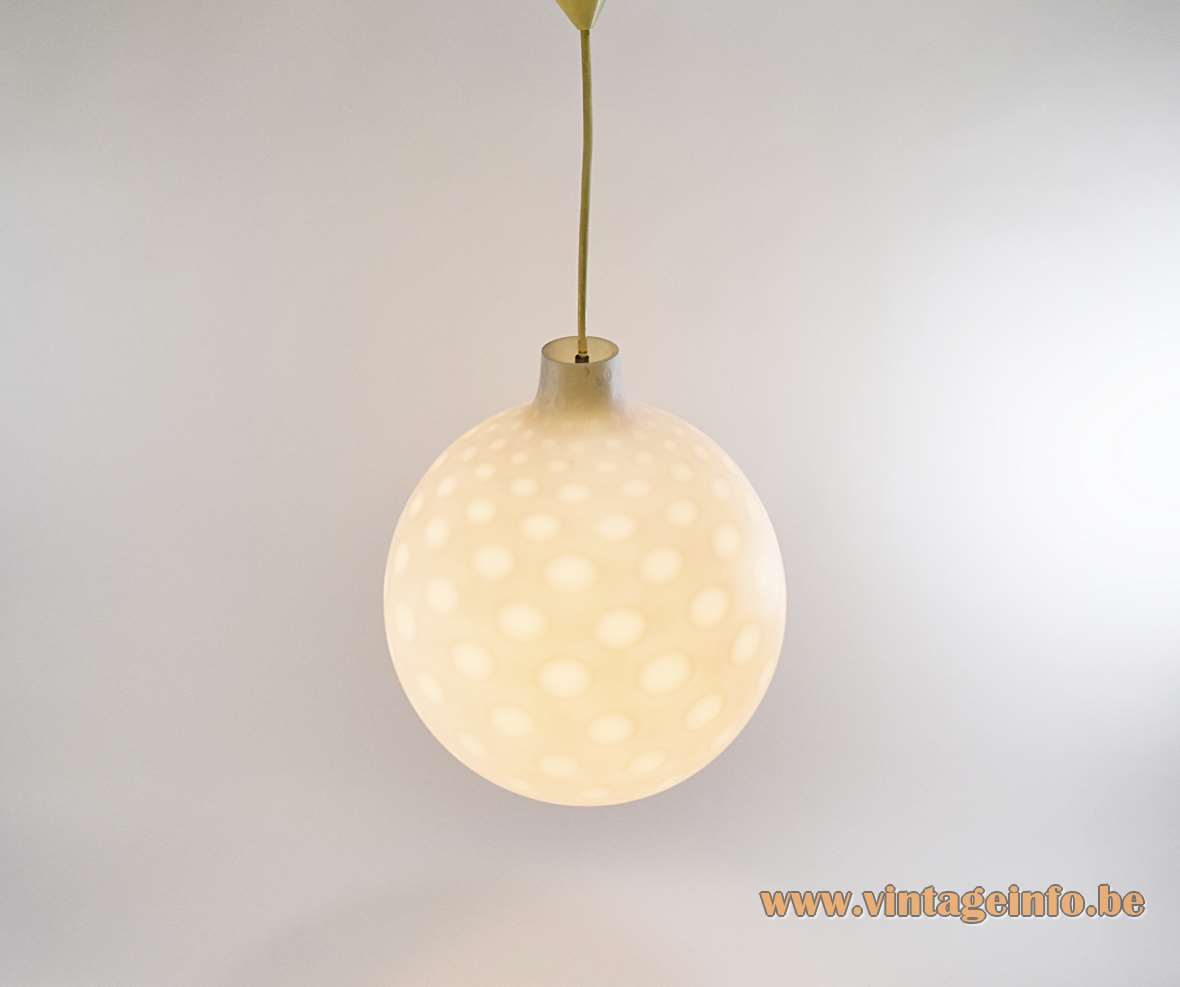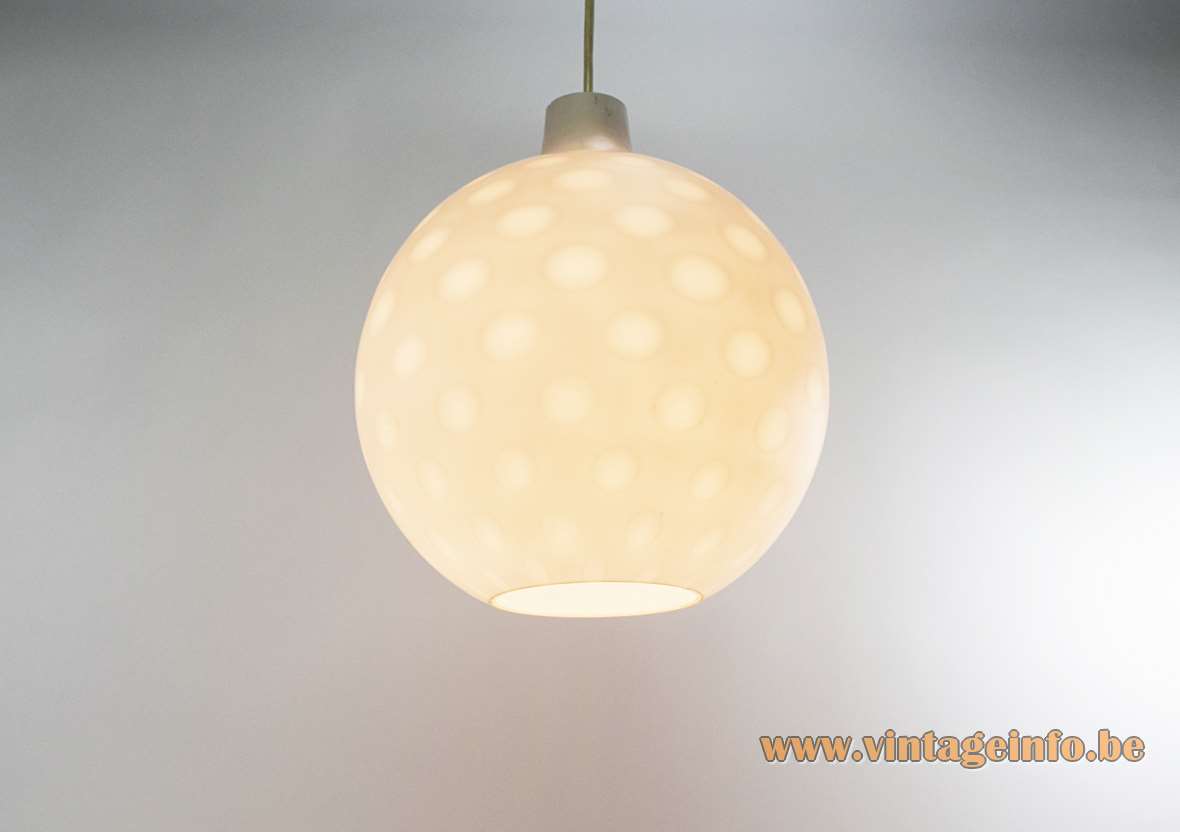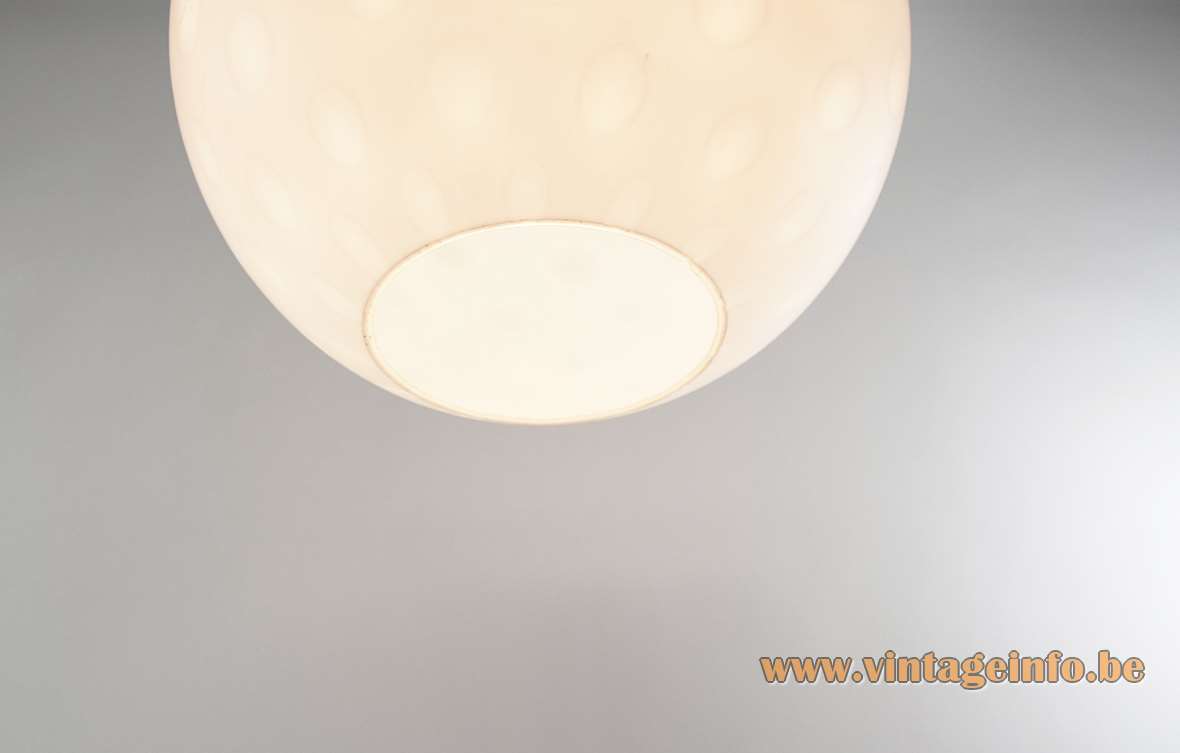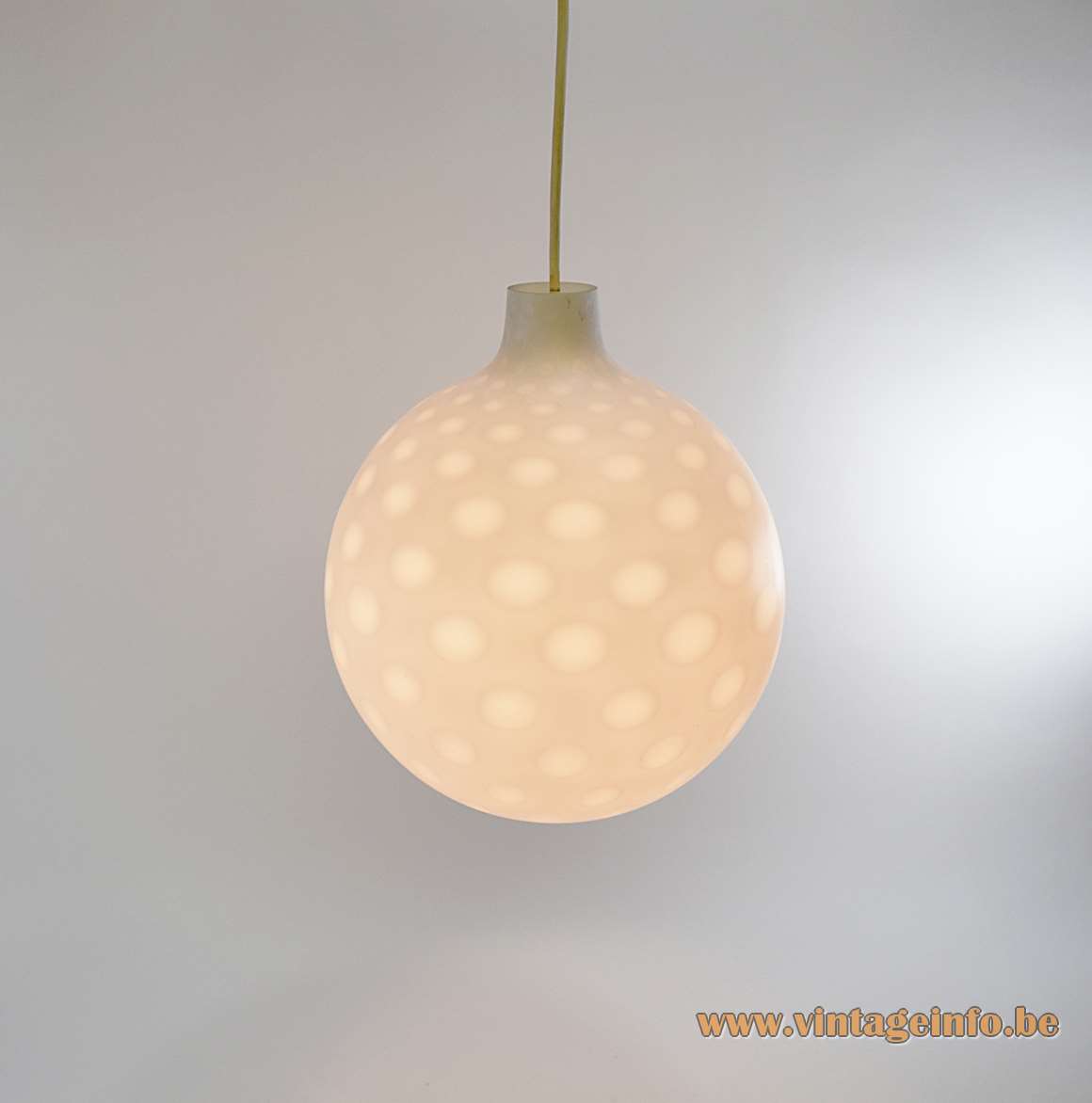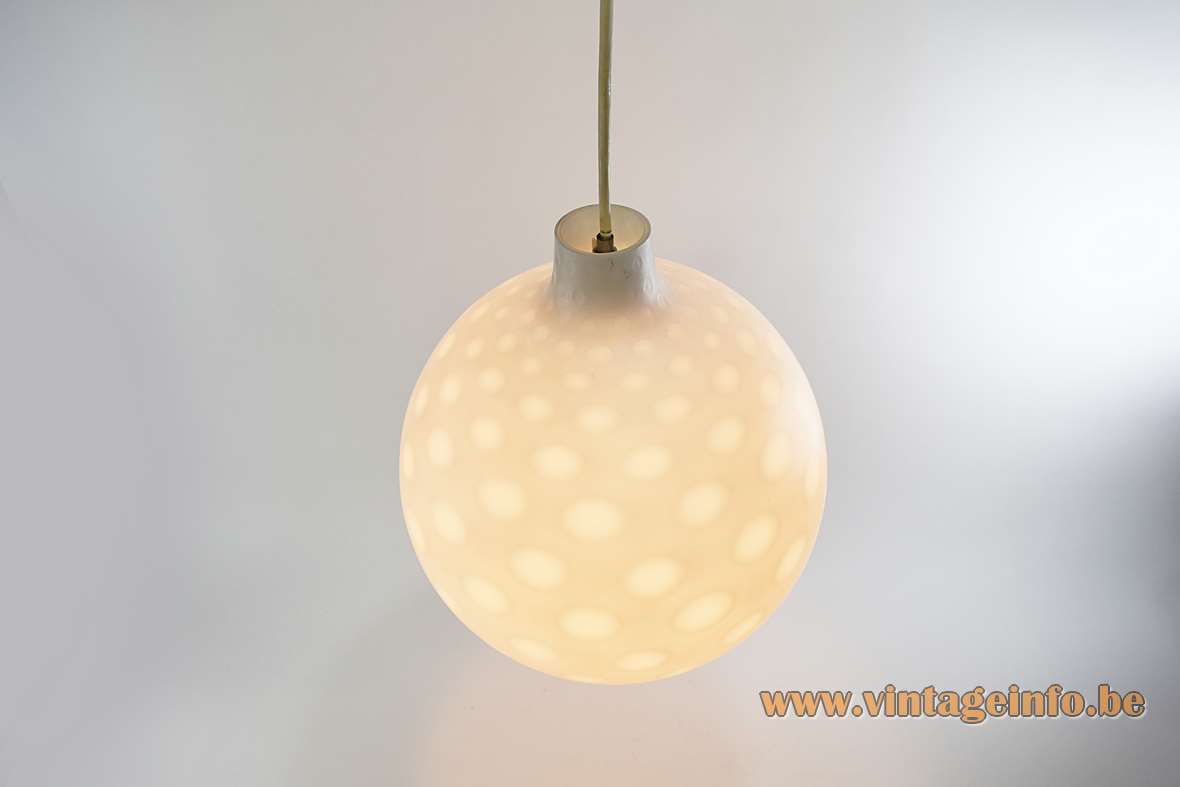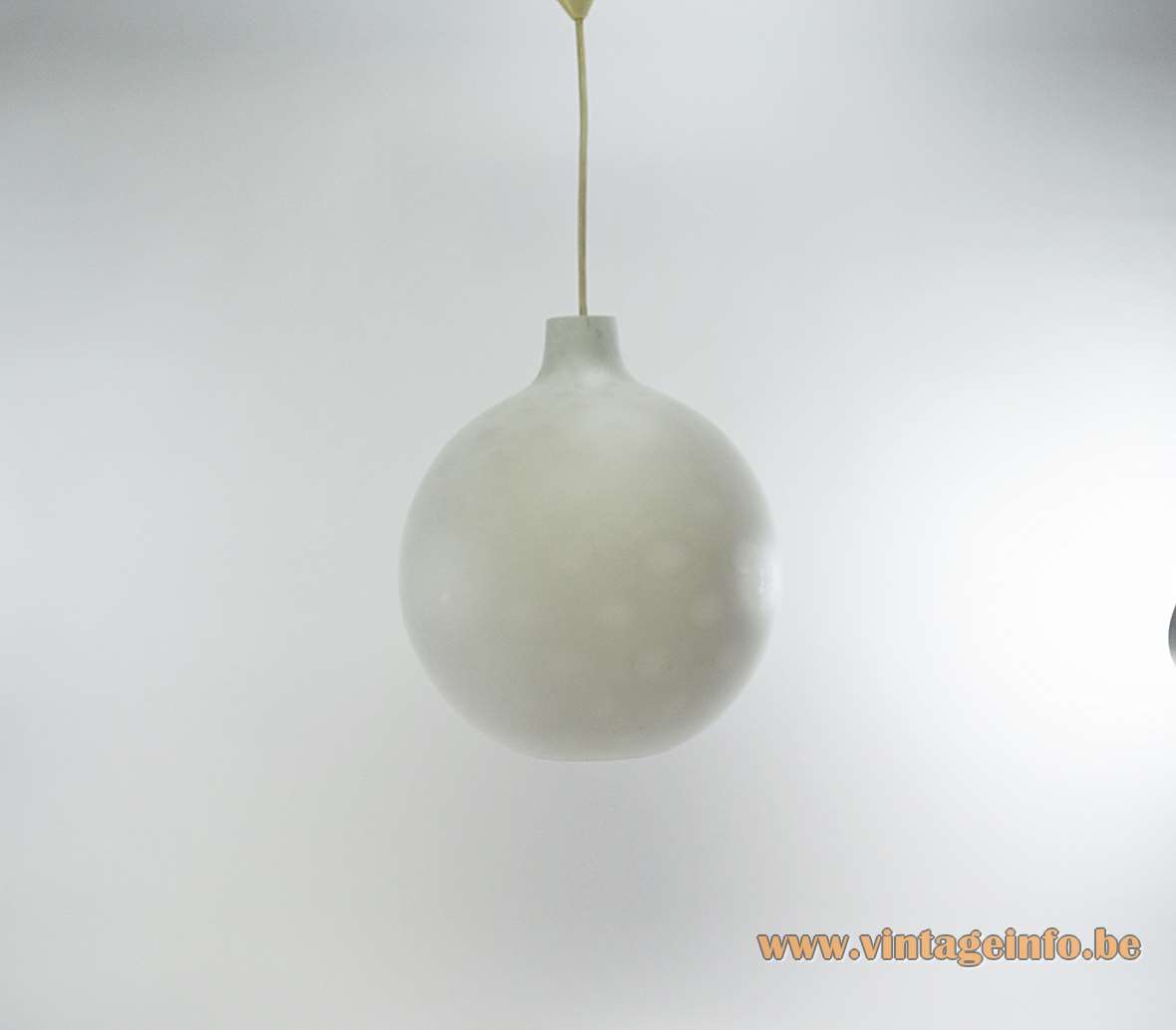Links (external links open in a new window)
Aloys Ferdinand Gangkofner website
Vintageinfo
Other lamps designed by Aloys Ferdinand Gangkofner
Aloys Ferdinand Gangkofner Como Pendant Lamp
Materials: White opal hand blown onion/tulip shaped glass globe lampshade with many dots. Brass rod and clamps. Metal E27 socket.
Cord Length: 80 cm / 31.49”
Height: 33 cm / 12.99”
Width: ∅ 28 cm / 11.02”
Electricity: 1 bulb E27, 1 x 100 watt maximum, 110/220 volt.
Any type of light bulb can be used. But preferably a white/opaque bulb. A clear bulb creates stripes on the glass and therefor also on the walls.
Period: 1950, 1960s – Mid-Century Modern.
Designer: Aloys Ferdinand Gangkofner (1920-2003).
Manufacturer: Made and sold by Peill + Putzler in Düren, Germany and also produced for Raak, The Netherlands.
Other versions: This Aloys Ferdinand Gangkofner Como pendant lamp exists in 1 version. Gangkofner designed several lamps in this style for Peill + Putzler. Several of them were sold by Raak and probably some other companies.
Aloys Ferdinand Gangkofner
Aloys Ferdinand Gangkofner was born in Reichenberg, Germany in 1920. He studied at the Staatliche Fachschule für Glasindustrie (State Technical College for the Glass Industry) in Zwiesel from 1934 until 1935. He worked as a freelancer for Peill & Putzler from 1953 until 1958. After that he started to work as an independent for the ERCO lighting company, also from Germany. He died in Munich, Germany in 2003.
Peill + Putzler
Glashüttenwerk Peill und Sohn was founded in 1903 in Düren, a small town in (West) Germany. Peill und Sohn merged with Putzler (founded in 1869) in 1947 as a glass works and lighting company and became Peill + Putzler Glashüttenwerke.
The company always worked with important designers such as Wilhelm Wagenfeld, William Brown, Helmut Demary, Aloys Ferdinand Gangkofner, Horst Tüselmann and many others.
In the 1950s 1500 people worked for the company. They also produced glass for other light companies in Europe, such as Raak, Amsterdam, The Netherlands, Disderot, France, Massive, Belgium and many others.
In 1995 the production of glass and lights moved to Slovenia, Poland and the Czech Republic. Only the trading of lamps en glass stayed in Düren. 1 year after the 100th anniversary in 2004, bankruptcy was filed.
In 2008 the name Peill + Putzler was re-used for several years for among others the Wagenfeld lighting of the German lighting company of Paul Neuhaus.
Today the Peill + Putzler factory is called Glashütte Düren and is converted to many other businesses and conference centre.
This lamp appears in the Raak catalogue 4 from 1958.
This pendant lamp is often confused with the Satellite pendant lamp Vilhelm Wohlert designed for Louis Poulsen, but the Satellite does not have the motifs on it and is completely opaque.
Raak
The Dutch company Raak was founded in 1954 by Carel O. Lockhorn (18 June 1923 – 6 October 2004), a previous employee of Philips Lighting Eindhoven. Raak, which means “to hit” in Dutch, implies design which precisely “hits the nail on the head”.
Raak is best known for their organic modern design of the 1960s and 1970s which combined glass & metals for a sophisticated futuristic style.
Collaborations
The light company collaborated with several international designers and architects, including Bertrand Balas, Evert Jelle Jelles, Frank Ligtelijn, Ger Vos, Jan Jasper Fayer, Li Helo, Maija-Liisa Komulainen, Nan Platvoet, Nanny Still-Mackinney, Nico Kooi, Sergio Asti, Tapio Wirkala, Willem van Oyen and many others.
Raak also collaborated with other companies. They worked with the German Peill + Putzler for the Raak Globe lamps. Peill + Putzler produced the glass. They also sold lamps made by Peill + Putzler, such as a pendant lamp designed by Aloys Ferdinand Gangkofner. For the Raak Discus the glass was made by Bega, also a German company. For the Stalactites flush mounts a cooperation with the Belgian Val Saint Lambert was undertaken in the late 1950s. Raak also sold some lamps that were produced by Staff Leuchten (Staff & Schwarz Leuchtenwerke GMBH) from Germany, and several other companies.
Carel Lockhorn sold the company in 1974 to ITT but remained a director until 1977. In 1980 Raak merged with BIS Lighting from Aalsmeer, also in The Netherlands and was renamed into BisRaak. In 1986 the Raak company became independent again. The company got a business appearance and only the colours white, black and grey were still processed.
In 1999, Raak merged with Artilite B.V. and Indoor B.V. and became CLA: Centrum voor Lichtarchitectuur B.V. in Drachten (Centre for Light Architecture). Lichtarchitectuur (light architecture) was the Raak tagline from the beginning in the 1950s. The Centre for Lighting Architecture was founded by Egbert Keen. The company was declared bankrupt on 19-05-2011.
